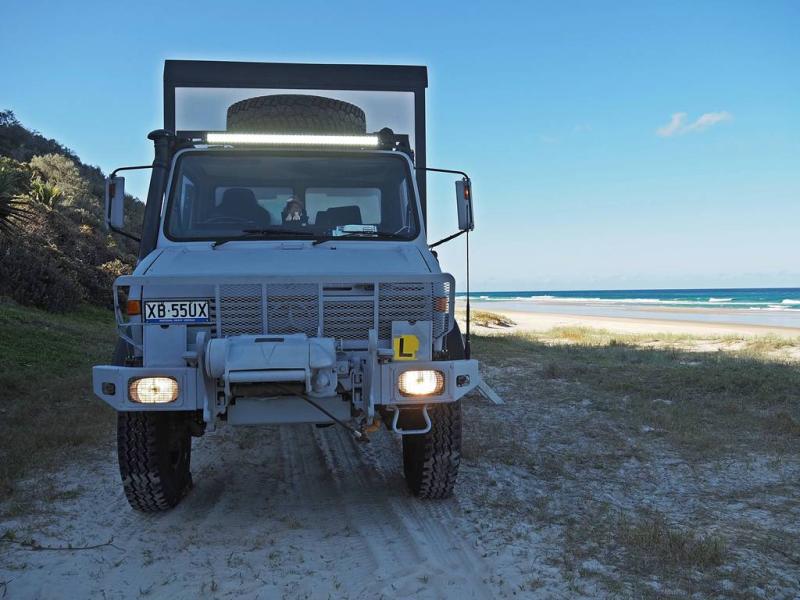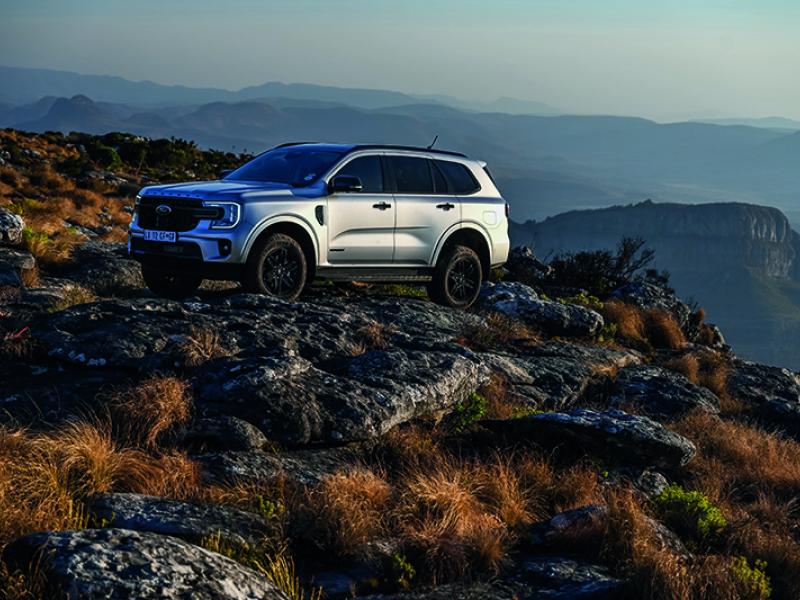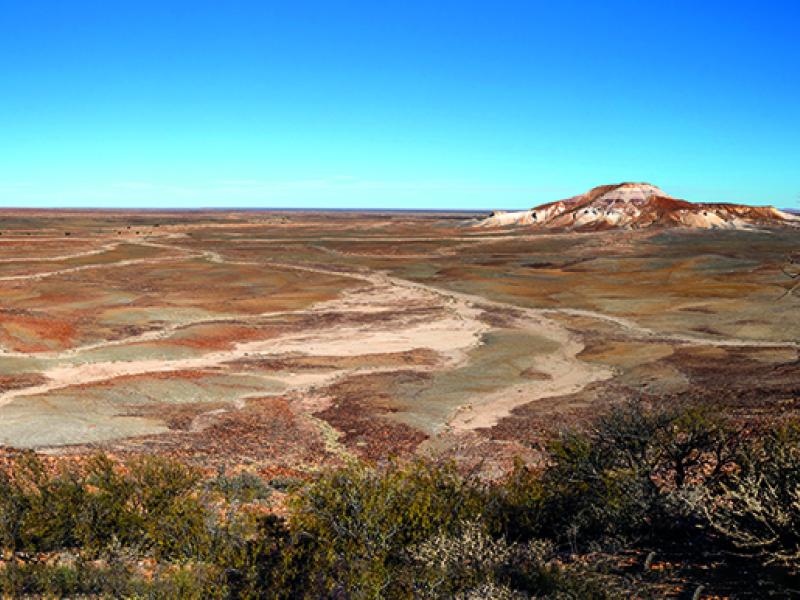Given the similarities between the two countries and their peoples, how hard, wagered Cantabrian Merv Moodie,
can it be for a Kiwi to cross the ditch and do a little 4WDing?
With the years getting on, I was thinking to myself, ‘You only live once, so I should make the most of it’.
One adventure I had been keen to go on for some time, was exploring the Australian Outback in a 4WD. Luckily, I have a very understanding wife who was happy to wave goodbye to me for a couple of months while I did so.
I think New Zealand is the best place in the world to live, but I have always had a hankering to explore the outback and some of Australia’s desert areas. And when you think about it, based on some YouTube clips and magazine articles, how difficult could it be?
I had thought of renting a vehicle, (too expensive unless it is a short trip) or taking one over from New Zealand, (with a one-year limit before it has to be removed) but buying one over there seemed the easiest route and was the one I chose in the end.
I also had a good friend who worked with me, by the name of Fritz Jury, who lives in Golden Bay, who was keen to do the same thing – so we planned a trip together.
First things first
I spent about a month or so looking online for a vehicle (at carsales.com.au) that could handle outback driving. I initially hoped to buy a Nissan Patrol or a Toyota Landcruiser – the go-to vehicles for outback travel – but any of these that came online in a decent state were quickly snapped up.
I had also seen a long wheel based Land Rover Defender that I liked, and I decided to go for this one. I have owned a few Defenders in my time and have had a good run with them, and I knew it would be up for the task. And so, I bought a 2010 three-door Defender from a couple who lived in Margaret River, Western Australia for AU$34,000.
It had 47k on the clock, a double battery system, aluminum bull bar and side rails and a set of driving lights.
Fritz managed to snap up a Nissan Patrol that was used as a paramedic’s vehicle in Cairns. It even came with the original red and blue flashing lights – which he flicked on at night, in the middle of the outback, just because he could. Even though it had done 450k it handled the trip with very well, with few problems.
After my purchase I drove it back to Perth to add a few extras: another spare wheel, a fridge, some camping equipment, and a basic set of tools. I carried extra fuel in three 20L jerry cans, plus three 20L containers of water.
Home again
It was late November 2014 by then, so I spent a couple of weeks driving from Perth to Bendigo. I had arranged for the Land Rover to be stored at an indoor facility in Bendigo until the following May – it is cheaper to store a car that size away from a main city centre.
The following May, Fritz and I flew over to Australia, where we planned to drive our vehicles from their storage units – his in Cairns, mine in Bendigo – and meet halfway, at Tennant Creek in the Northern Territory.
En-route, I stopped in Adelaide for a few days to have the Defender checked and fully serviced.
I also spent a night underground in one of the opal mine houses at Cooper Pedy on my way up.
Fritz and I met at the Tennant Creek’s camping ground late one afternoon in May– I remember it so clearly, the huge amount of satisfaction and relief I felt that the plan had come together. The combination of all those months of planning and scheming and now the adventure was about to begin. The next day we headed north.
Our first night freedom camping began so peacefully. We pulled off the road to a camping site, but it was teaming with groups of people in caravans and 4wds. So, we backtracked a few kilometres, down a side road heading to a cattle station, to camp the night in solitude, right on the edge of the road.
It was a typical outback evening: warm, calm, a sunset replaced by a scattering of stars, quiet apart from the last of the birds chirping for the day. I slept on a sleeping cot and Fritz on a stretcher covered with a swag.
Rude awakening
But at 4:00am, we were jolted awake by thunderous noise – metal banging and crashing, an engine roaring, the road shaking – I had no idea what was going on. Half-asleep, I peered out of the flap of my cot to see an enormous cattle road train thundering down the road toward the cattle station less than two metres away.
And five minutes later another one followed – I bet two drivers thought it was a hell of a joke to wake up a couple of unsuspecting campers before dawn. By now we were completely awake, so we called it a night and got ready for the day ahead.
From there, we made our way to Kakadu National Park and Litchfield National Park for several days, exploring towering waterfalls and oasis-like green parks dotted with Blue Gum trees.
It was early June, and already there was evidence of fires ripping through long grasses – via controlled burns to firebugs getting carried away – with birds perched at the fire’s edge to take their pick of the fleeing insects.
We found ourselves in the firing line too – we spent an afternoon driving through a patch of grass burning so fiercely that Fritz had to stop and wait for the grass to be razed before he could follow me.
Leaving Kakadu and Litchfield, we made our way up to Nhulunbuy (Gove) and out to East Arnhem Land. You need an Aboriginal Permit to visit some of these places, which we collected in Katherine before we departed. It is a two-day trip to get there and on the way to Nhulunbuy, I rounded a corner to find a car in the middle of the road – an Aboriginal couple with three young children, two flat tyres and no spares.
We couldn’t fix the tyres but we could give them a ride home, to their community about 30 kilometers away. I got chatting to the man, who told me how his community made most of its money catching wild buffalo. He said they would run them down in an old buggy, catch them and tie them to a tree, leaving them to calm down for a while, before bringing them back to the community’s holding pens.
The local children fed the buffalo hay and spent time with them to calm them down, he said.
The buffalo were then shipped, live, to Malaysia where they would repopulate domestic herds.
Snakes and ladders
The Northern Territory is one of those places where you need to be hyper-aware of your surroundings: crocodiles lurking in still-seeming water, snakes slithering through the long grass, wild buffalo that could charge after being provoked.
We were worried about each other’s ability to escape while taking photos – I had a knee replacement coming up and Fritz was worried that I’d be unable to outrun a buffalo if it charged, while I worried a hiding crocodile would lunge out of the water at him as he absentmindedly videoed crabs scuttling along the water’s edge.
One evening in Arnhem Land, we were camped on a small bank, around 15 metres from an estuary. After dark, we went out with torches, and spotted six pairs of gleaming crocodile eyes from the estuary. We did not feel like we were in danger, but it reminded us that it wasn’t our land – it was theirs.
From there, we drove back down to Katherine, to stock up on supplies, and spent the day as tourists exploring the Katherine Gorge, a quite special and unique area, with hundreds of other visitors.
On to the Kimberley
Then to the Kimberley region, we drove down the Gibb River road, stopping at El Questro cattle station - a fully functioning cattle station with a booming tourism business – for a few days.
One evening we drove the steep drive up to a lookout, around 300-400m high, to watch the red, layered sunset. At dusk, I looked down at the road running through the forest below and saw a huge plume of dust rising from the road, left behind by a party of around 10 vehicles heading back to the camping area for the night.
I remember being struck by the sheer amount of dust that vehicles whipped up on these outback tracks. If you ever came across a road train, it was best just to pull over and wait a few minutes after they had passed for the dust to settle before continuing. We generally did not drive in the early evening or night in the outback because of the greater risk of animal strikes. Hitting a kangaroo or emu would be bad enough but hitting wild cattle or buffalo could be disastrous.
Before leaving the Kimberley region we stopped for two nights at the Bungle Bungle Range. The beehive-shaped rock formations are spectacular. We then worked our way down the western side of Australia, past Port Headland, one of the largest iron ore loading ports in the world, down to Steep Point – the westernmost point in Australia.
We spent several days out at Steep Point. It was a fascinating area: high cliffs, blowholes shooting water up to 30 or more metres into the air in rough conditions, humpback whales migrating. You would look out to sea and see them porpoising, blowing air, some quite close to the shore, and as far as the eye could see. If you sat there all day, you would see several hundred passing through.
So much to see
From here down to Kalgoorlie, along the Nullarbor Plain, home to the longest straight in Australia – 145.6 kilometres – and back to Bendigo for me – it was time to go home.
People say the Nullarbor’s boring – because you are staring at the same straight and treeless road for two days straight – but I’ve crossed it twice and each time, I’d quite happily turn around and go back again.
There is just so much to see, it is so interesting: the Cocklebiddy Cave is the Nullarbor’s most famous underwater cave, being 6.24 km long, and is the world’s longest cave diving penetration.
Then there is the Nullarbor Golf Links idea which is unique: the 18-hole, par 77 golf course spans 1,365 km with one hole in each town or roadhouse, along the Eyre Highway – from Kalgoorlie in WA to Ceduna in South Australia.
The spectacular Bunda Cliffs that await you at the strait’s coastal section seem to come out of nowhere, such is the change to what you have been travelling through.
Next month: Part Two, Googs Track and the Simpson Desert.







